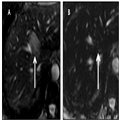

Gadopiclenol contains a single gadolinium atom and has been engineered to produce two-to-three–fold greater T1 relaxivity than commercial agents without altering other fundamental physical characteristics ( 6, 7). In this issue of Radiology, Robert et al ( 5) report on the in vivo MRI signal-enhancing power of a new nonionic macrocyclic GBCA, gadopiclenol. Longer-term research is currently focused on substitution of GBCA with iron- or manganese-based agents and on creating GBCAs that can be used at lower doses ( 2– 4). Already there has been a great increase in the use of macrocyclic GBCAs that, as a class, have well-documented slower gadolinium-dissociation kinetics. These concerns have reignited research into new MRI contrast agents, with the aim of reducing or eliminating deposited gadolinium, especially in patients with renal impairment, pediatric patients, and patients likely to require multiple doses of contrast agents ( 1). Dissociated gadolinium can become deposited in various tissues, including central nervous system tissue, albeit in small quantities without known toxicity. Their overall safety has been exemplary, but concerns exist over long-term deposition of very small amounts of gadolinium that become dissociated from the active GBCA. 2008 130:6025–6039.Gadolinium-based contrast agents (GBCAs) have been used for 30 years to the great benefit of patients. EP-2104R: a fibrin-specific gadolinium-based MRI contrast agent for detection of thrombus. Overoye-Chan K, Koerner S, Looby RJ, et al. Combined ultrasmall superparamagnetic particles of iron oxide-enhanced and diffusion-weighted magnetic resonance imaging facilitates detection of metastases in normal-sized pelvic lymph nodes of patients with bladder and prostate cancer. Brain tumor enhancement in magnetic resonance imaging at 3 tesla: intraindividual comparison of two high relaxivity macromolecular contrast media with a standard extracellular Gd-chelate in a rat brain tumor model.

MRI contrast agents: classification and application (review). Physicochemical and pharmacokinetic profiles of gadopiclenol a new macrocyclic gadolinium chelate with high T1 relaxivity. In this context, the development of next-generation MR contrast agents should focus on high-stability and high-relaxivity GBCAs, such as gadopiclenol, which offer the possibility to adapt the administered Gd dose to each indication while ensuring an optimal patient safety. Despite the large research efforts to identify and develop alternative Gd-free MR agents, manganese- and iron-based contrast agents have failed to reach market approval. Altogether, GBCAs in combination with new MR techniques have found their place in the diagnostic pathway of various diseases. Besides, magnetic resonance imaging (MRI) has benefited from MR technological advances, which provide alternative solutions to increase the MR signal, generate new contrasts on MRI scans, and accelerate their acquisition and analysis. Yet, following the recent discovery of Gd retention in brain, the same agencies adopted different positions ranging from suspension of marketing authorizations, changes in GBCA safety labeling, and performing preclinical and clinical studies to assess the potential long-term consequences of Gd accumulation on motor and cognitive functions. Approximately 10 years ago, the regulatory agencies decided to restrict the use of GBCAs to minimize the risk of nephrogenic systemic fibrosis in patients with severe renal insufficiency. Despite their undisputable usefulness for disease diagnosis, gadolinium (Gd)-based contrast agents (GBCAs) have gone through 2 major safety crises. This review summarizes 30 years of experience in the development and clinical use of magnetic resonance (MR) contrast agents.


 0 kommentar(er)
0 kommentar(er)
